Are There Heavy Metals in Makeup?
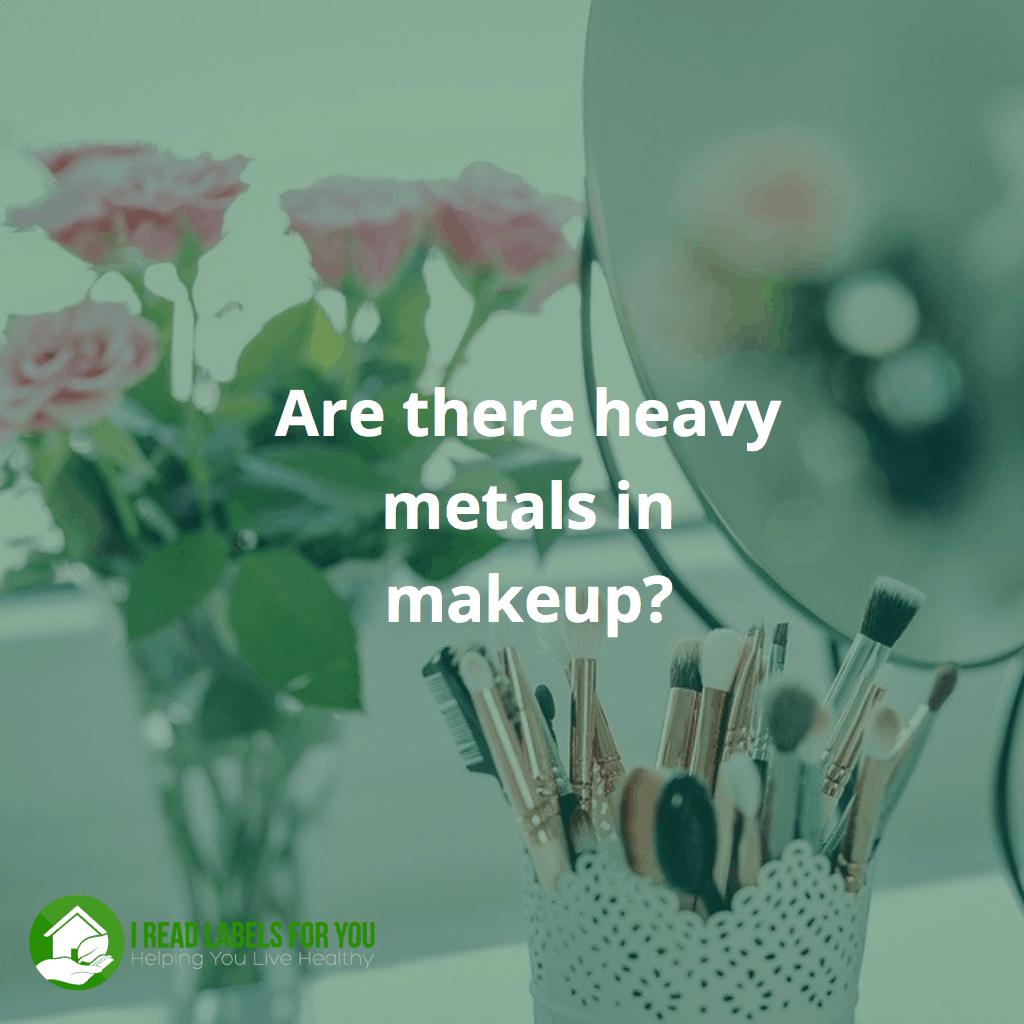
Before we buy a skincare product, we have to read the ingredients to make sure that they are safe. I agree, it is not fair to ask that of us – after all, who has the time? But this is the way the system works. Unfortunately, makeup products pose an additional challenge. That is because of the possibility of heavy metals in makeup. In other words, to choose the safest makeup brands, we must look into the safety of the ingredients that impart color. These ingredients are pigments or dyes, and the FDA calls them color additives.
Dyes and pigments in makeup
Cosmetic products may contain either petroleum- or mineral-based colorants. I prefer mineral pigments because they do not contain contaminants associated with petroleum. These contaminants may include carcinogenic and endocrine-disrupting benzo[a]pyrene. They also may include carcinogenic PAHs (polycyclic aromatic hydrocarbons), and thyroid-disrupting and allergenic resorcinol. You can see many other impurities on the FDA website.
Additionally, petroleum pigments may be comedogenic (1). Thus, if you have acne-prone skin, you have another reason to avoid cosmetics with petroleum pigments. On my blog, you will find makeup with mineral pigments only.
However, mineral pigments are not perfect. As you will see from the studies below, both petroleum- and mineral-based pigments may have heavy metals. These heavy metals include lead, cadmium, arsenic, mercury, aluminum, beryllium, and thallium. You will not see heavy metals on the product label because they are not ingredients. They are contaminants. As consumers, we can’t know how many heavy metals a makeup product contains. Therefore, we must take precautions. There are actions we can take to help us choose the safest makeup brands and/or reduce our exposure to potentially toxic heavy metals in makeup.
Heavy metals in makeup
Tests that found heavy metals in cosmetics
In 2007, the Campaign for Safe Cosmetics released a report entitled A Poison Kiss. It tested 33 popular brands of lipsticks for lead content. The report stated that as many as 61% of lipsticks contained lead, with levels ranging up to 0.65 ppm.
In 2007, the FDA found lead in all of the 20 lipsticks tested. The lead amount ranged from 0.09 ppm to 3.06 ppm with the average of 1.07 ppm.
Three years later, in 2010, the FDA found lead in all of the 400 lipsticks tested, ranging from 0.026 ppm to 7.19 ppm with the average of 1.11 ppm.
And in 2011, the Canadian Environmental Defense tested makeup bags of six Canadian women (49 face makeup products). They looked for arsenic, cadmium, lead, nickel, beryllium, thallium, mercury, and selenium. The researchers found that all the products had multiple heavy metals in them. Even the “cleanest” of them had both nickel and beryllium.
In 2013, University of California researchers found at least one of nine toxic heavy metals in all 24 lip glosses and eight lipsticks it tested. The list included chromium, cadmium, aluminum, manganese, and lead, among others. Most of the tested lip products contained high concentrations of titanium and aluminum. All examined products had detectable manganese. Lead was detected in 24 products (75%), with an average concentration of 0.36 ± 0.39 ppm.
Don’t the results of these tests make you want to find the safest makeup brands even more?
Why are heavy metals in makeup?
Heavy metals are not intentionally added to cosmetics unless it is lead acetate we are talking about. Yes, the US still allows its use. The others are contaminants.
How do they get there? Makeup color additives are derived from either petroleum or minerals. The raw materials of both come from the Earth’s crust. Heavy metals are a natural part of the Earth’s crust, as they are present in water, soil and air as a result of industrial pollution. Hence, trace amounts of heavy metals are found in dyes and pigments used in cosmetics.
Are heavy metals in makeup a health concern?
The good news is that the dermal penetration of heavy metals is generally low. For example, per the Canadian government, dermal absorption of cadmium is only 0.5%. The primary sources of exposure to heavy metals are through ingesting heavy metal-contaminated water or food. In addition, it can happen through using contaminated cookware or antique dishes. (Please consider booking a consultation with me if you need help with evaluating your home or work environment for potential heavy metal exposure.)
The safest makeup brands limit heavy metal contaminants
Despite the low absorption rate, the government of Canada encourages companies to limit heavy metal contaminants. Why?
First of all, the skin can be damaged or broken due to eczema, acne, or irritation. When the skin has lesions, the absorption rate is higher.
Second, the penetration rate of the same heavy metal can differ from product to product. This is because some products include ingredients that enhance skin penetration.
Third, heavy metals in makeup can be ingested. That’s the case with the products we put on our skin. Also, when you touch your made-up face and then eat without washing your hands, you can ingest tiny amounts. The same thing happens with lipstick, especially if you don’t remove it before eating or drinking.
Lastly, we should not forget that heavy metals bioaccumulate. This means that every trace exposure adds up. Our bones store heavy metals and they stay in our bodies for decades. There aren’t perfectly safe and effective detox methods for heavy metals. Sadly, one of the most effective methods of getting rid of heavy metals is breastfeeding. (Even so, experts say that breastfeeding is still much better for babies than formula!)
Thus, I believe that we should take precautions about heavy metals in makeup and choose the safest makeup brands. But know that from a big picture perspective, makeup is not the major source of heavy metal exposure.
Are there any regulations for heavy metals in makeup?
The limits of heavy metals for dyes and pigments
Most dyes and pigments that the FDA approves of for use in cosmetics have heavy metal limits assigned to them by the FDA. These limits are mainly for lead, mercury, and arsenic. Depending on the type of color additive, the limits differ. For example, iron oxide is a common mineral pigment to look for in the safest makeup brands. Its limits are as follows:
Lead: not more than 10 parts per million.
Arsenic: not more than 3 parts per million.
Mercury: not more than 3 parts per million.
But for ultramarines, they are:
Lead: not more than 20 parts per million.
Arsenic: not more than 3 parts per million.
Mercury: not more than 1 parts per million.
So, as you can see, the limit for lead is higher. Thus, I prefer to use makeup that utilizes mineral pigments with lower levels of lead.
Some pigments, such as chromium oxide greens, do not have any heavy metal limits assigned to them.
In addition, it is not clear how these limits are translated to the amounts of lead and other heavy metals in makeup in the product as a whole. Let’s say a product has a few different pigments. This means that the probability of heavy metal contamination increases.
The limits of heavy metals for a cosmetic product
The safest makeup brands must follow government regulations and guidelines of consumer safety organizations. Some of the most important ones for our purposes are as follows.
In 2016, the FDA provided draft guidance as to the maximum level of 10 ppm for lead as an impurity in cosmetic lip products and externally applied cosmetics marketed in the US.
The government of Canada has set the following limits per cosmetic products:
- Lead: 10 ppm
- Arsenic: 3 ppm
- Cadmium: 3 ppm
- Mercury: 1 ppm
- Antimony: 5 ppm
And finally, the Environmental Working Group has also set similar limits for the EWG Verified program:
- Lead: 10 ppm
- Arsenic: 3 ppm
- Cadmium: 3 ppm
- Mercury: 1 ppm
- Antimony: 5 ppm
- Chromium: 100 pm
- Nickel: 200 pm
As the Canadian government says, it is up to a makeup company to assure the safety of their products. Over the years I’ve received lots of responses from manufacturers. Unfortunately, I’m not so confident that companies test their cosmetic products to any significant extent, despite the laws cited above. And this is not very helpful in search of the safest makeup brands.
What do companies say about heavy metals in makeup?
When I ask makeup companies whether they have tested their mineral pigments for heavy metals, I get all kinds of unsatisfying answers. Those who say they have tested their pigments do not normally provide any details. They don’t say which heavy metals they tested for and what their findings were. Nor do they say if they sent samples to an independent lab or they assumed that their supplier had conducted the tests. And of course, nobody has shown me test reports.
Even a well-known makeup company has not shown me its test report. I’m talking about Beautycounter. You can read the details of my communication with this company over a two-year period here.
But I do not give up. I keep asking because I believe the more we ask, the more likely positive changes take place. It has happened in other industries. And there is some evidence that it might be happening in the makeup industry as well.
What questions should consumers ask of makeup companies in search of the safest makeup brands?
Considering the absence of evidence of test reports about heavy metals in makeup, I would take a broader stance and inquire as follows.
- In which country are your cosmetic products made?
- In which country are your mineral pigments made?
- I understand that mineral pigments may contain trace amounts of heavy metals. What precautions do you take to reduce the risks of disproportionally higher levels of heavy metals in your cosmetics?
It is important that products and pigments in cosmetic products do not come from China. The reason for that is that the background levels of industrial pollution are so high that I believe there might be higher levels of contaminants in the products. Plus, the regulations are not very strict over there. So, if a company uses pigments from China, it is hard to consider it one of the safest makeup brands, unless they have rigorous testing procedures and show us their test reports.
What can we do to reduce exposure to heavy metals in makeup?
- Keep your makeup away from babies and children. Kids are more vulnerable to heavy metal exposure.
- Less is more. Use makeup sparingly and, maybe, not every day, especially when you nurse or cuddle with a baby.
- The more vibrant the color, the more pigments it contains. Chances are that this product will have a higher content of heavy metal contaminants.
- Always remove makeup before heading to bed.
- Avoid eating with lipstick on.
- Avoid using loose bare mineral types of makeup, as they usually don’t have any fillers (depending on the brand). So, it’s pure pigment straight onto, and perhaps into, your skin.
- Avoid breathing in makeup powders.
- Ask questions of makeup companies. And buy from those who are aware of the issue and do something about it.
- Please share this post with your friends. They need to know, too!
Conclusion about heavy metals in cosmetics
Again, this is an example of the fact that it is up to us, as consumers, to protect our health. Let’s ask companies about heavy metals in makeup and demand safer cosmetic products. We should do it for our kids. Please check out the IRLFU shop for the safest makeup brands.
(1) Nelson, Fern P., and Jean Rumsfield. “Cosmetics Content and Function.” International Journal of Dermatology 27.10 (1988).

Download The Free Guide!
5 Powerful Steps To A Non-Toxic Home
Join our informed consumer community and get our free guide the “5 Powerful Steps To A Non-Toxic Home”.

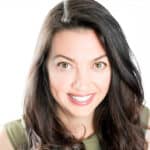 Written by
Written by 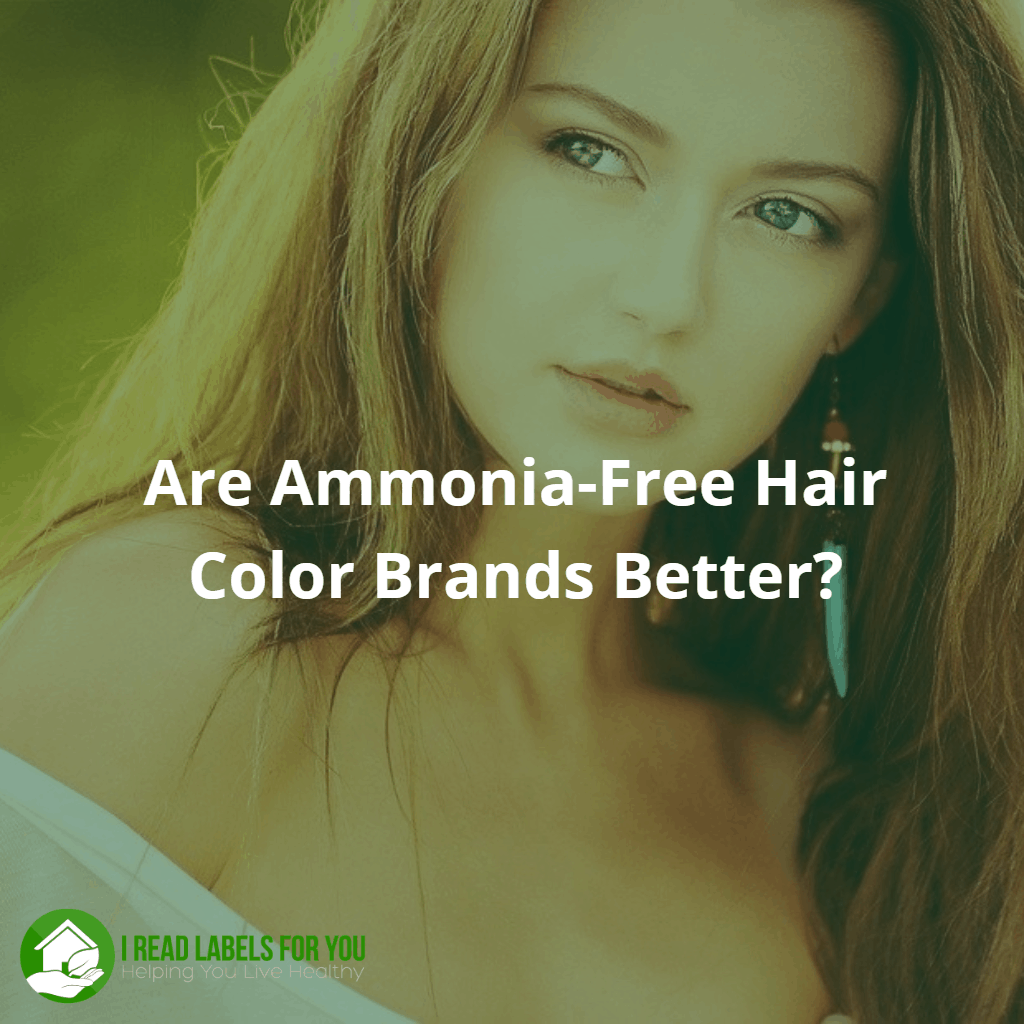
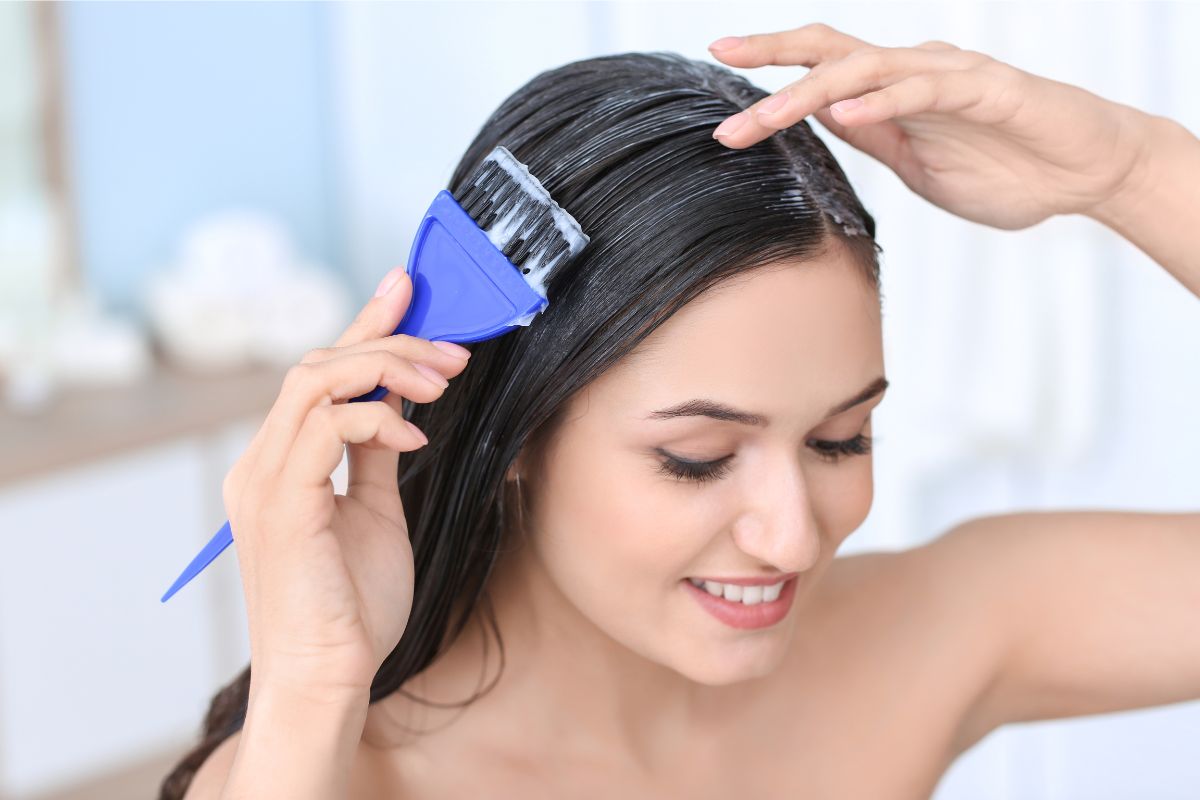
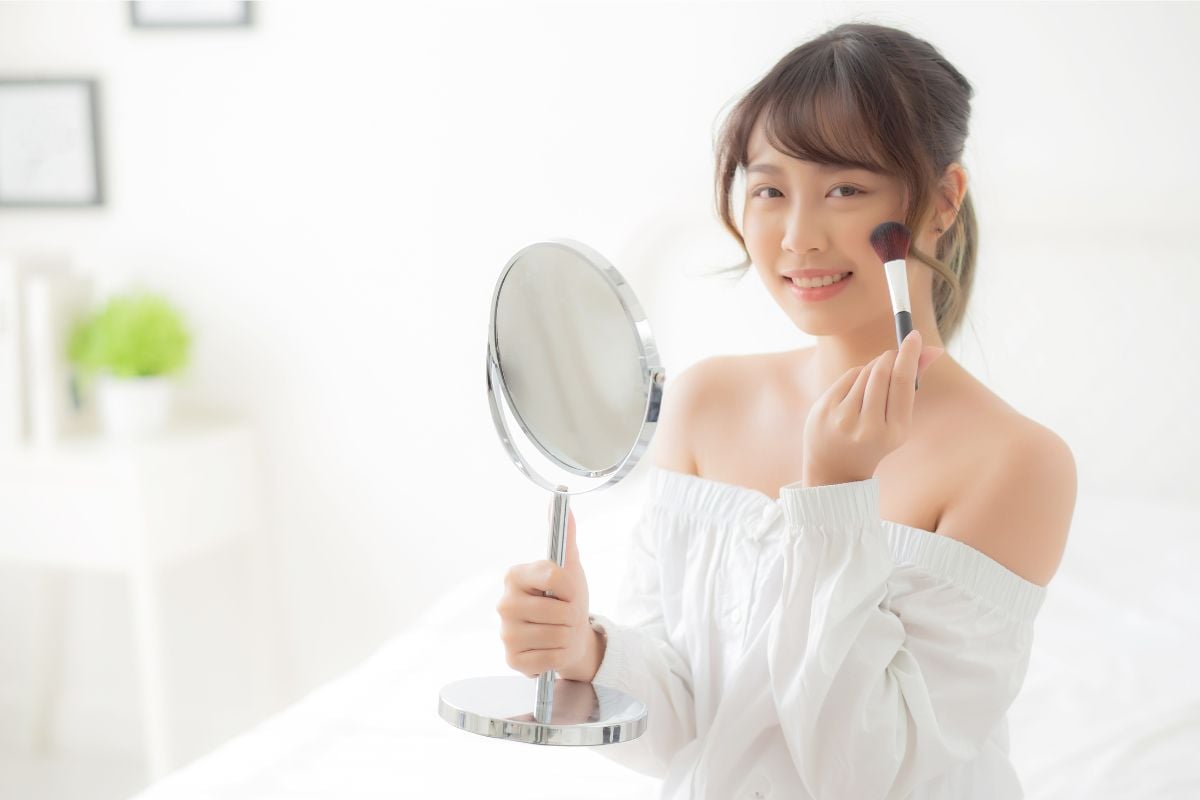
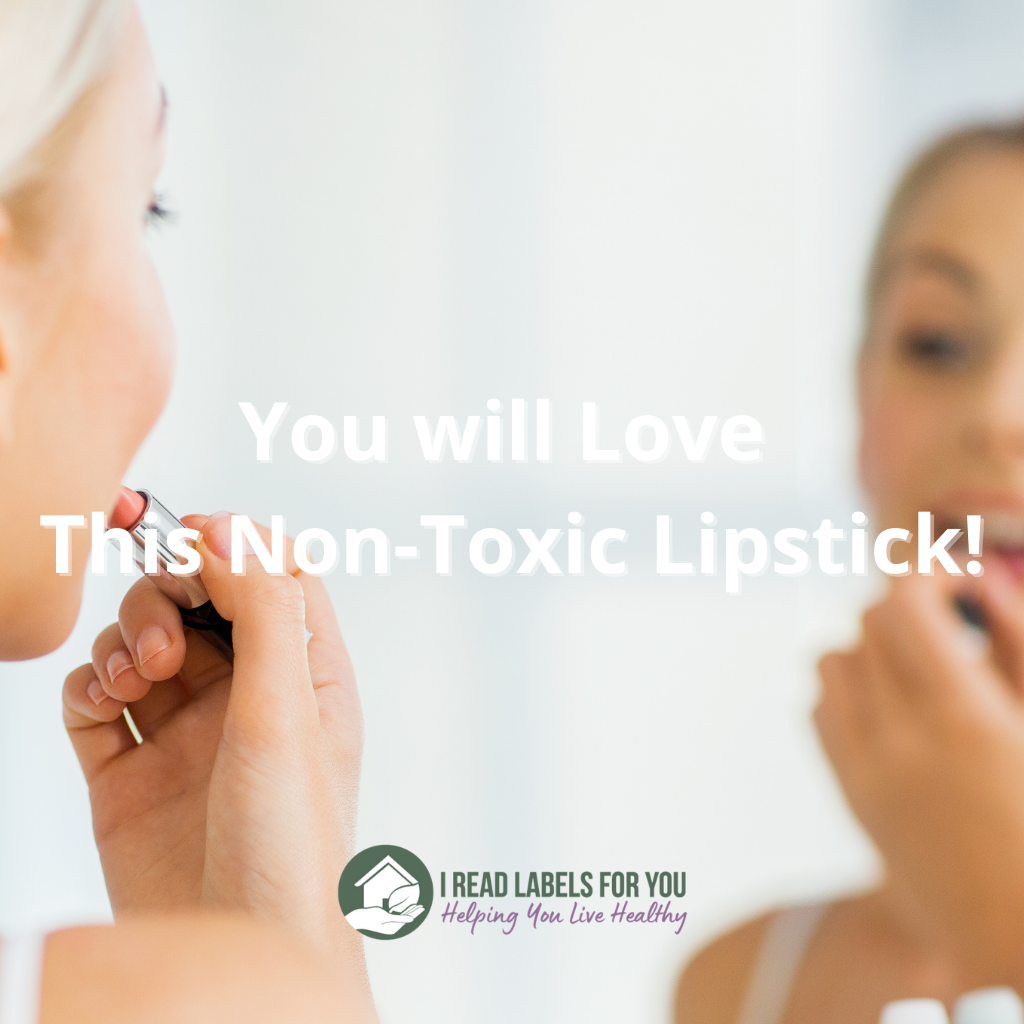


I have been using Well People products… do you know anything about them? It’s very hard to dig deep, seems answers are very vague when inquiring to companies. Thank you!
Thank you for doing your own research into companies! We haven’t looked into WP.
What about the W3ll People concealer? Looks natural but I’m not sure if it has preservatives or not
Hi, Ashton! I took a quick look at WP Bio Correct Concealer and noticed that the ingredient list does not list water, and water is what makes products need preservatives. The product does use Ethylhexylglycerin that is an okay preservative.
what is the difference in cbd oil and medical marijuiana
Hi Zariyah! We appreciate your interest! Irina will be happy to help you with your question in a private consultation: https://ireadlabelsforyou.com/services/
So this article and comments began in 2015, it is now May 2020. What have you learned since then? What makeup brand do you use ir recommend?
Hi, Karen; This article has been recently revised. Please look at the updated date. I am glad to observe that public awareness and asking questions have brought results. You can read more about the results in this post here: https://ireadlabelsforyou.com/non-toxic-foundation-works-well/ ~Irina
Hi Irina, any update on Beautycounter’s response? I have recently been told I have extremely high level of metal in my body. I am shortly due to have all my mercury fillings replaced and am currently detoxing. I am using a metal free sunscreen, and not looking for metal free and vegan cosmetics. Thank you for your blog I found it very interesting. Xx
Hi, Emma: Here is my full story on Beautycounter. I can’t recommend their products. https://ireadlabelsforyou.com/beautycounter-story/ Do you filter your water? What cookware and dishware do you use? What kind of detoxing method do you use? I would love to consult with you to see if we can find out the sources of heavy metals. https://ireadlabelsforyou.com/services/consulting/ Let me know if you need my help. ~Irina
Any information about Paula Begoun’s products. PAULA’S CHOICE.
Hi Irina –
Have you reached out to Beautycounter recently? Or did they ever follow up to your initial questions concerning heavy metals?
Thanks!
Hi, Windy: Yes, it has been a LONG process. Even my husband is helping out. He is a lawyer. Anyway, I think we are close to signing an NDA so they can show me heavy metal test reports. ~Irina
Oops, here’s the link. The one above is to the photo.
http://www.beautycounter.com/know-everything/beautycounters-long-and-winding-heavy-metal-journey/
Here is something fascinating. In this article, they said, “For the most dangerous metals (lead, arsenic, mercury, and cadmium), these levels are usually undetectable, but we ensure that they are always under 2 ppm. This is unprecedented in the cosmetics industry.” When I emailed them, they said, “Each heavy metal has a different limit, so we cannot say that the metals are below 2ppm.” Am I missing something?
Oh wow, thanks for doing that homework for us! And yes, I agree with you … those are not the answers I’m looking for. I just found your site today & will be going through it. I’m especially interesting in which make up you find most promising … especially mascara. Most days I wear no make up and use the oil cleansing method from skin care … love the organic oil options out there. (gotta read those labels too) When I am going out of the house … I feel best when wearing makeup, so you can probable see why the research is important to me. I have spent the last 2 years detoxing from heavy metals, so the last thing I want to do is smear more on my body on a daily basis. Thanks for you thoughts on this!
I know exactly what you mean. When I wear makeup, I feel more beautiful, confident and happier. I have a post on mascaras and will be posting on other type of makeup soon. I have to do LOTS of work behind the scenes. ~Irina
Wow, detoxing from heavy metals… I am so curious as to how one does that? Can someone please shed some light on this subject or Irina, could you maybe do a blog post on it for us? Pretty please…. 🙂 Also, might be a silly question, but if I want the doctors to test me for heavy metals, which types of tests should I ask for and for what metals should they test?
I do have a post about that: https://ireadlabelsforyou.com/chelation-therapy/ 🙂 ~Irina
Have you looked into Beauty Counter? Looks promising: http://www.beautycounter.com/know-everything/wp-content/uploads/2014/11/heavymetals-preview.jpg
I thought so, too. Unfortunately, when I asked them about specific amounts of heavy metals they find in the pigments they source, they said that this information is proprietary. I do not find this type of answer comforting. Do you? Thank you for your comment, Jennifer!
I’d love to answer this as a partner with them for a couple of years now. I have worked hard for several years to research safer non-toxic products, and have scoured right and left for companies who are transparent and honest about what they use, as well as strict in their screening process. Beautycounter discloses everything- I mean EVERYTHING. You can find every single ingredient as well as why they use it and where it’s sourced from right in their site- transparency is their thing. (They’re very open about answering all questions openly- I’ll happily give you the email or number to call!) They not only batch test products three times for heavy metals alone, but they also third party test to be thorough as sometimes things can sneak in the sourcing process. (All of their products are made in the US except for their color cosmetics, which are made in Italy strictly because the soil there is cleaner/lacks the heavy metals that ours has.) The problem is that the FDA doesn’t regulate what goes into skin care and beauty products- while the EU has now banned about 1400 ingredients, the US just bans 30- up from the measly 11 it did previously. I love Beautycounter because they truly are an education first company. They’re even working in DC advocating for new laws so that all products can one day be made safer… and slowly, we’re making headway! In the meantime, I truly trust their ethics, screening process, and ingredient selection process. Of course using zero products is grand, as are homemade goodies, but for those who want products like the ones you’d get at a high-end department store- but without all the junk and made much safer- I think it’s one of the best options out there. Of course it all comes down to personal preference, and there are some other great mindful companies out there… but I’m currently pregnant and am wearing it head to toe, and I am very choosy about what I expose my lil one to. 😉 Also always happy to answer any questions anyone has! 🙂
By the way, love this article!!! 🙂
Thanks so much for this comment, Natalie! I am glad that you are satisfied with Beautycounter’s level of transparency. I am not as comfortable with it though for the following reasons.
As you might know, I do not accept anyone’s marketing claims, no matter how impressive they are. Instead, I look at the ingredients and ask hard questions. I only recommend a product or line if I am satisfied with the answers I receive.
I first contacted Beautycounter in 2015. I asked some questions in an e-mail. On December 4, 2015, I received an answer from their customer service that did not, in my opinion, answer my questions satisfactorily.
In July 2016, I was contacted by one of my blog readers who, like you apparently, had become a Beautycounter salesperson (you reference a “partnership” with them). Because she was determined to get me answers to my questions, I let her forward my questions to the Beautycounter team. They responded to my blog reader, who forwarded the answers to me. They answered my questions, but I had more questions. My reader was able to put me in touch directly with the Beautycounter team.
As a result of her efforts, I had a conference call with the Beautycounter team on November 11, 2016. Among other things, I asked them for the heavy metal test results they said they had performed on samples. They said they would get back to me on that.
On December 6, 2016 they sent me a Non-Disclosure Agreement (“NDA”) to sign. Companies often use non-disclosure agreements in order to protect their trade secrets, and I was fully prepared to sign a non-disclosure agreement that would work for both of us. However, the NDA they provided me was so rigid that it would not have permitted me to say anything about the test results, even that I could not recommend the products.
Accordingly, it would have been foolish of me to have signed it as it was written. So, on December 8, 2016, I wrote back to them and suggested the following addition to the NDA:
12. Safe Harbor Language
Notwithstanding the foregoing, if asked her opinion as to any Counterbrands product, Recipient [i.e. Irina Webb] may state as follows:
1. “I have looked into their product ingredients and decided not to recommend their products.”
2. “I have looked into their product ingredients and have decided to recommend only _________ [or: the following products: __________].”
3. If asked to elaborate, Recipient may state, “I am prevented by the terms of a non-disclosure agreement I signed with Beautycounter from saying anything further.”
I did not hear back from them.
On December 19, 2016 I talked to them about the NDA and they said they would look into revising it but that they are busy.
I recently followed up and received this, “Working on it, thanks for the nudge! As I mentioned via phone, we’re grossly short staffed right now, but I’m in the middle of hiring! 🙂 Thanks for your patience.”
I have also recently been advised that they have hired a lawyer, and that the lawyer will be in touch with me. I have since heard nothing.
Maybe they will agree to my reasonable request. If so, I may have the ability soon to say whether or not I approve of their products, but I may not be able to elaborate.
In short, I do not have enough information to say if they are safe.
Just so you know, it would be very easy and potentially lucrative for me just to jump on the bandwagon and say how much I love their products. However, I can’t do that in good conscience, because too many people trust my opinions and I never want to do anything to lead anyone astray simply for financial gain. Our health and beauty are my priorities.
One last thing about Beautycounter gives me pause. In my opinion, plants are best for our skin, not petroleum, but Beautycounter admits that they may be using petroleum-based ingredients. This is a quote from their email to me: “About 25% of our ingredients are synthetic and possibly petroleum-derived. We always prefer to use natural wherever possible and we are very careful to use safe ingredients, whether synthetic or natural. It’s important to note, that this percentage is not reflective of the percentage of synthetic ingredients that make up our formulas as we typically use them at low concentrations.”
I wish I had more to offer you. Perhaps you and others can work with Beautycounter and encourage them to get back to me. Better yet, encourage them to make their test results public, and to amend their practices so that they can definitively say that they use no petroleum-based products. That statement, if true, would put me in a better position to recommend their products.
Again, thanks for your comment!
~Irina
Great post, thankyou Irina. 🙂
I agree Irina, the safest makeup is no makeup. I know a few months ago I would have not said this but thanks to your review on Spa Secrets 4 u, I have been using several of Poppy’s all natural products including the Youth Serum, you recommended with amazing results. Thank you for all the work and research you do!
Thank you, Mari. I am glad you love Spa Secret 4 U. She is truly amazing and I am not compensated to say that 🙂
Loose powder is worse?? This surprises me! Would foundation powder that is not a bright pigment be as bad?
Thanks 🙂
There is a higher risk of inhaling loose powder, too.
So I’m guessing the Bare Minerals brand powders are problematic too?
I am not making accusations against any specific company. The point is that due to the nature of makeup pigments, they all may contain trace amounts of heavy minerals. Random tests by independent labs have proven that. Since there is no requirement to list heavy metals on the label, we have to take precautionary steps with every makeup brand. When a makeup company steps forwards and backs up their claim of testing for heavy metals, I will share this information with you immediately. In the meantime, I do use some makeup but I use it the way I described in the article. Thank you for the question, Jessica!
I’m curious to know, have you looked into 100% Pure makeup concerning this purpose?
Yes. I will send them another email. Maybe my last two emails got lost in a shuffle.
curious what 100% Pure will say … if they reply at all. I’ve been using their mascara for over a year now.
Their website is not so great on listing all ingredients.
Hi Natalia:
I believe they replied after all and said that it was proprietary information. ~Irina
that’s too bad. Thank you for the follow-up!
Are there any safe make-up brands without metals?
I am not aware of any. To know for sure, I have to see test reports from a certified lab. No manufacturer showed them to me yet.
I just discovered a make up brand called “100% Pure”, and they use fruit pigments instead of minerals. I am giving it a try and got some samples from a local store in my area, and they sell online too.
Hi, Lilith: here is my question: If fruit and plant pigments work so great, provide a variety of colors, and heavy metal-free, why is 100% Pure the only company that uses them? You can read more about that here: https://ireadlabelsforyou.com/annual-search-best-safe-mascara/ Have a beautiful weekend! ~Irina
Have u tried it yet? How is it so far?
Luscious cosmetics says this “Although not required by law, we voluntarily partner with globally recognized third-party testing lab SGS to run Heavy Metals Safety tests on each production batch of our cosmetics. This includes testing for a list of other toxic substances commonly present in cosmetics such as arsenic, cadmium and lead.”, So I would definitely consider them to be a safe brand, although not mainstream… They are indie, but to me that’s even better!
Hi, Skylar, do they disclose their heavy metal test report? ~Irina